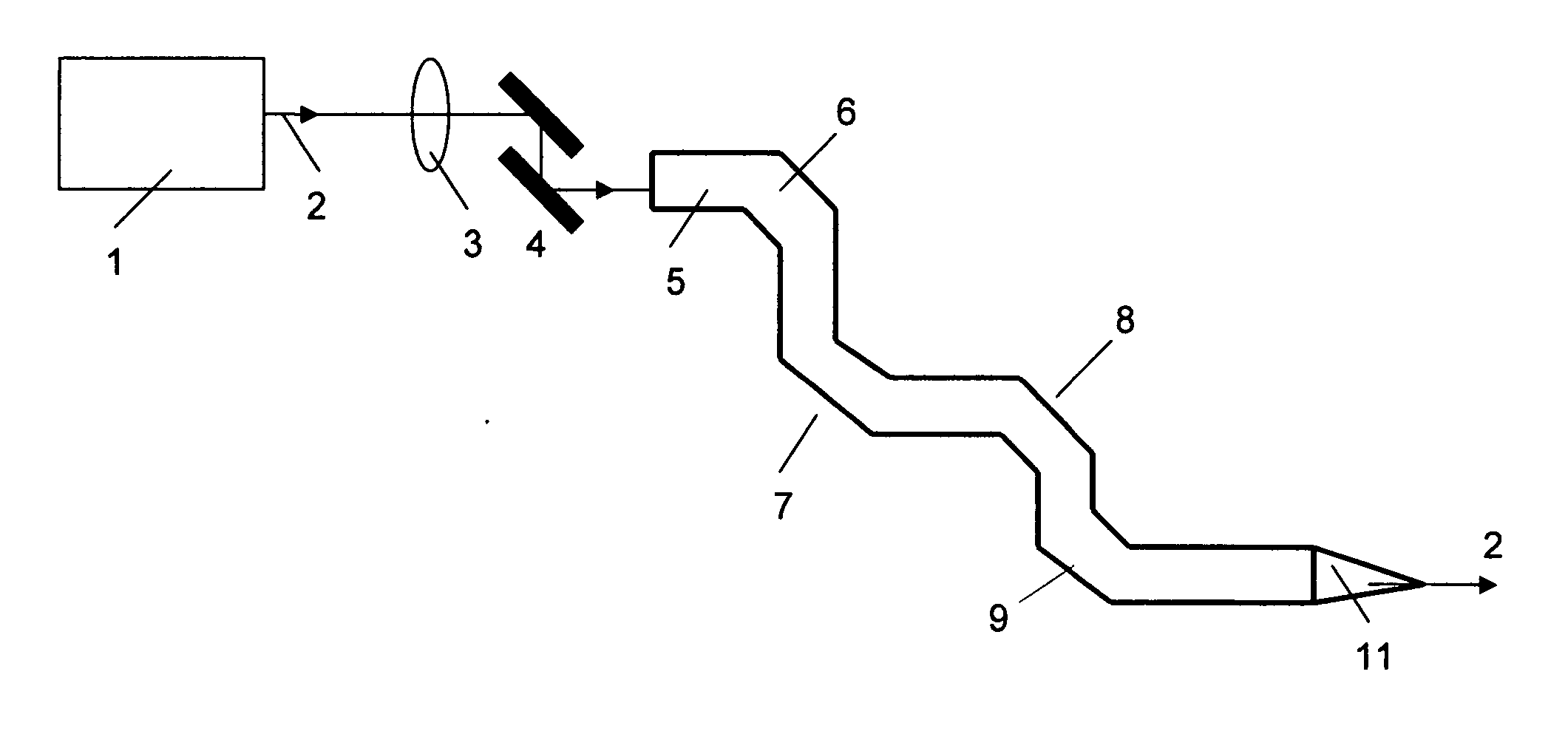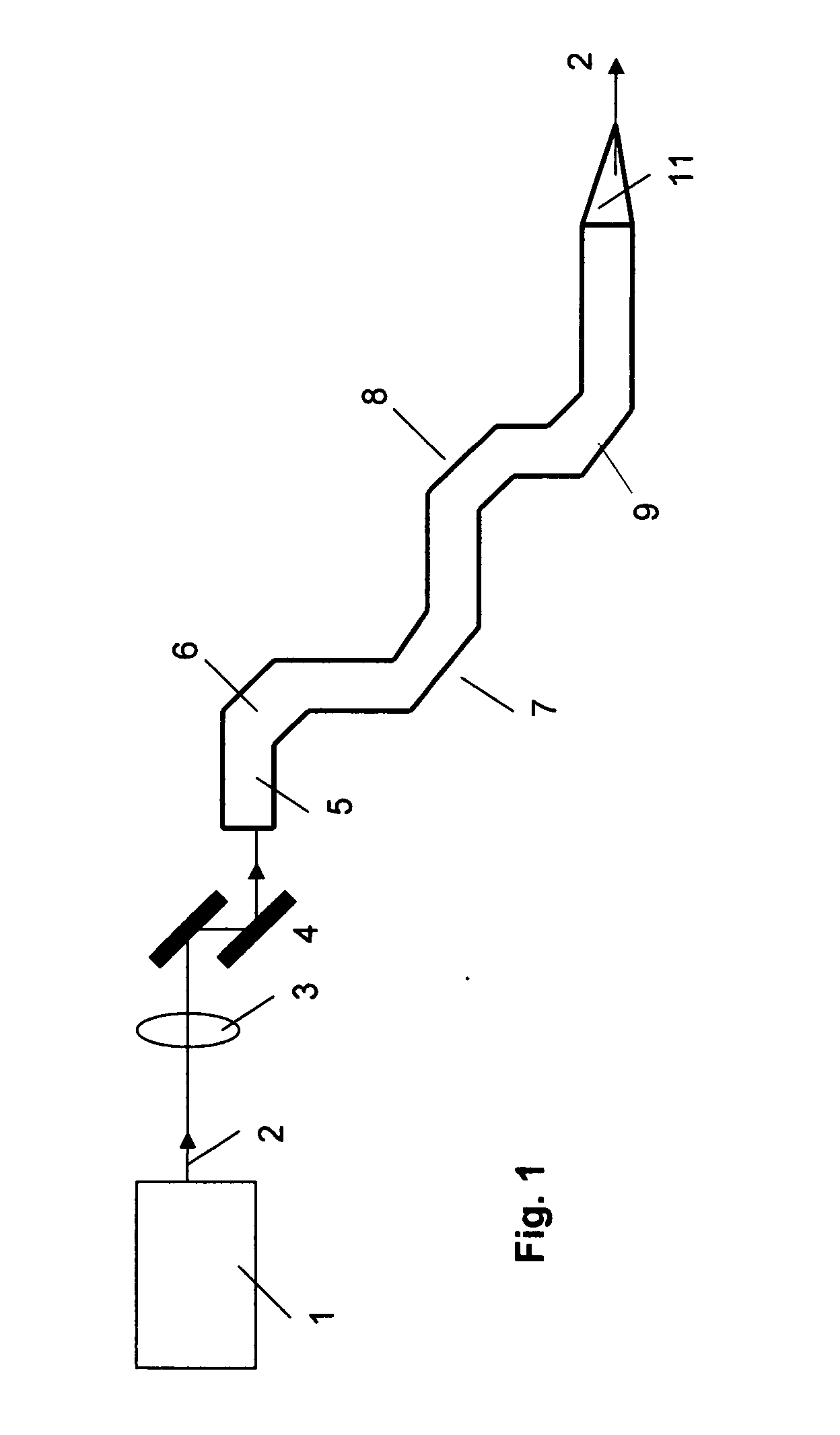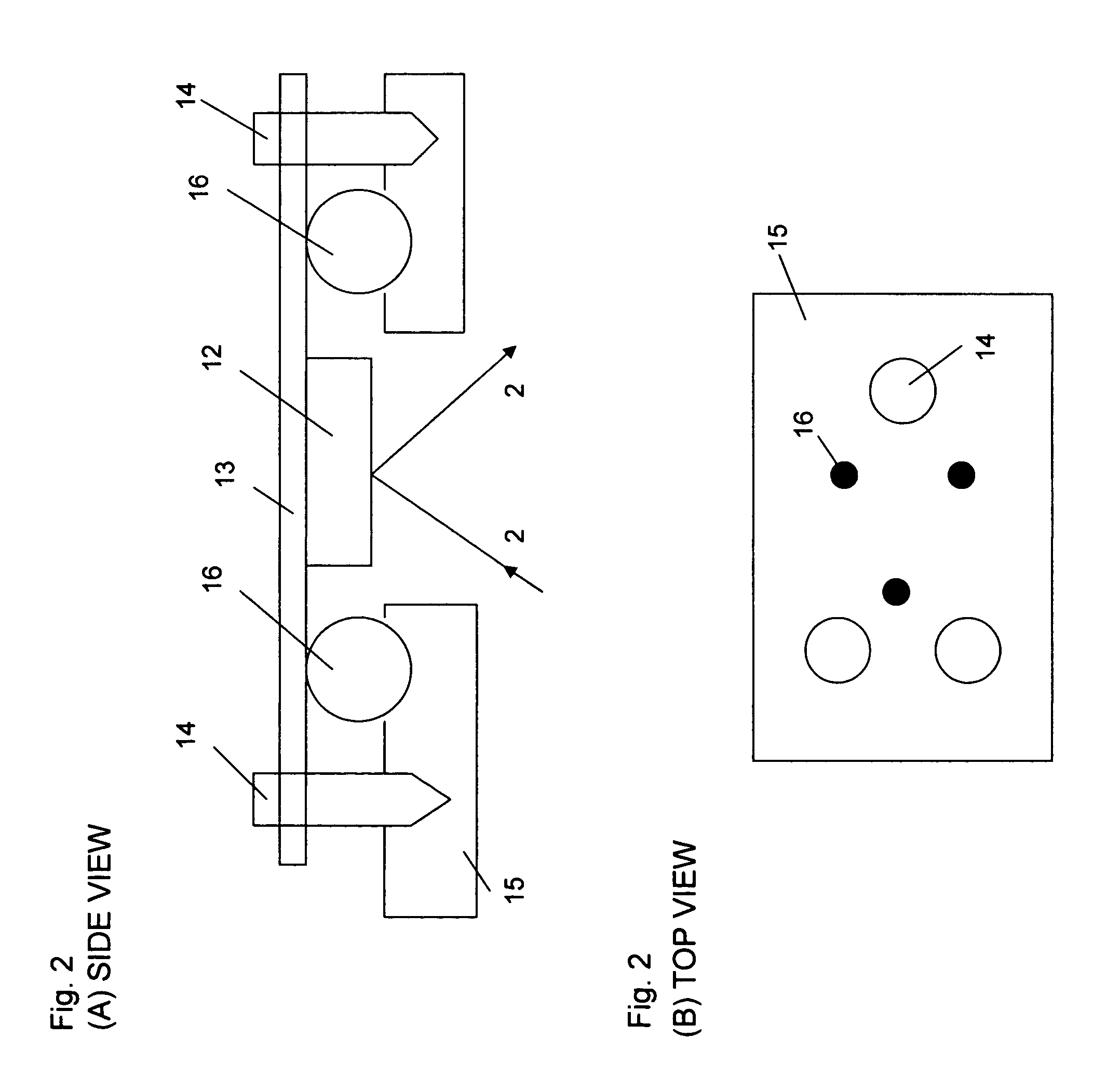Treatment of eye disorders using articulated-arm coupled ultraviolet lasers
a laser and ultraviolet technology, applied in laser surgery, medical science, surgery, etc., can solve the problems of hyperopia, myopia, and prior art laser surgery to reshape the corneal surface curvature, and achieve the effects of reducing the intraocular pressure (iop) of the eye, increasing flexibility and available space, and increasing lens accommodation
- Summary
- Abstract
- Description
- Claims
- Application Information
AI Technical Summary
Benefits of technology
Problems solved by technology
Method used
Image
Examples
Embodiment Construction
[0042] A surgical laser system in accordance with the present invention (as shown in FIG. 1) comprises a basic laser 1 having wavelength in the UV spectrum 2 is focused by lens 3 and coupled by a pair of reflecting mirrors 4 to an articulated-arm (ATA) 5 which uses a set of UV high reflecting coated mirrors mounted to each of the joints 6-9, and has an end piece 11. These mounts are independently adjustable for fine-tuning of laser alignment and centration in order to meet our required beam directional stability (smaller than 0.2 mm) and spot size accuracy (better than 0.15 mm).
[0043] As shown in FIG. 2A (the side view of the mount), the UV reflecting mirror 12 is mounted to a base 13 which can be angled tuned to change the reflection angle (approximately 45 degree) of the incident laser beam 2 by three screws 14 attached to the joint body of the articulated arm 15 which has three supporting metal balls 16 glued to the joint body 15. FIG. 2B shows the top view of the design, where ...
PUM
 Login to View More
Login to View More Abstract
Description
Claims
Application Information
 Login to View More
Login to View More - R&D
- Intellectual Property
- Life Sciences
- Materials
- Tech Scout
- Unparalleled Data Quality
- Higher Quality Content
- 60% Fewer Hallucinations
Browse by: Latest US Patents, China's latest patents, Technical Efficacy Thesaurus, Application Domain, Technology Topic, Popular Technical Reports.
© 2025 PatSnap. All rights reserved.Legal|Privacy policy|Modern Slavery Act Transparency Statement|Sitemap|About US| Contact US: help@patsnap.com



